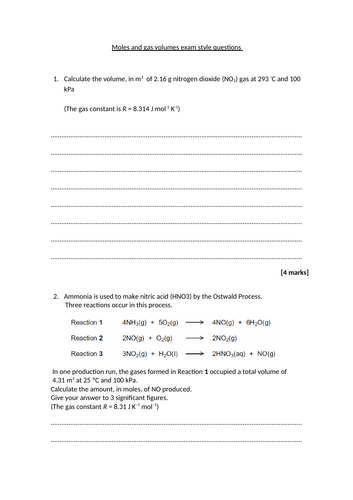






A complete lesson including starter and main work task on the ideal gas equation
Lesson begins with exam style questions to recap on what students should know about moles
By the end of the lesson, students should be able to:
- Recall the ideal gas equation
- Understand the properties of an ideal gas
- Rearrange the ideal gas equation to determine either pressure, temperature, moles or volume
Teacher will be able assess students understanding and progress throughout the lesson via mini AfL tasks
Students complete a 20-30 minute main work task at the end of the lesson on the ideal gas equation
Worked example answers to the main work task are provided to allow students to self assess their answers
Declaimer: Please refrain from purchasing this popular resource for an interview lesson or a formal observation. This is because planning your own lessons, including using your own lesson PowerPoints, is a fundamental skill of a qualified/unqualified teacher that will be assessed during the scenarios outlined above
Something went wrong, please try again later.
This resource hasn't been reviewed yet
To ensure quality for our reviews, only customers who have purchased this resource can review it
Report this resourceto let us know if it violates our terms and conditions.
Our customer service team will review your report and will be in touch.